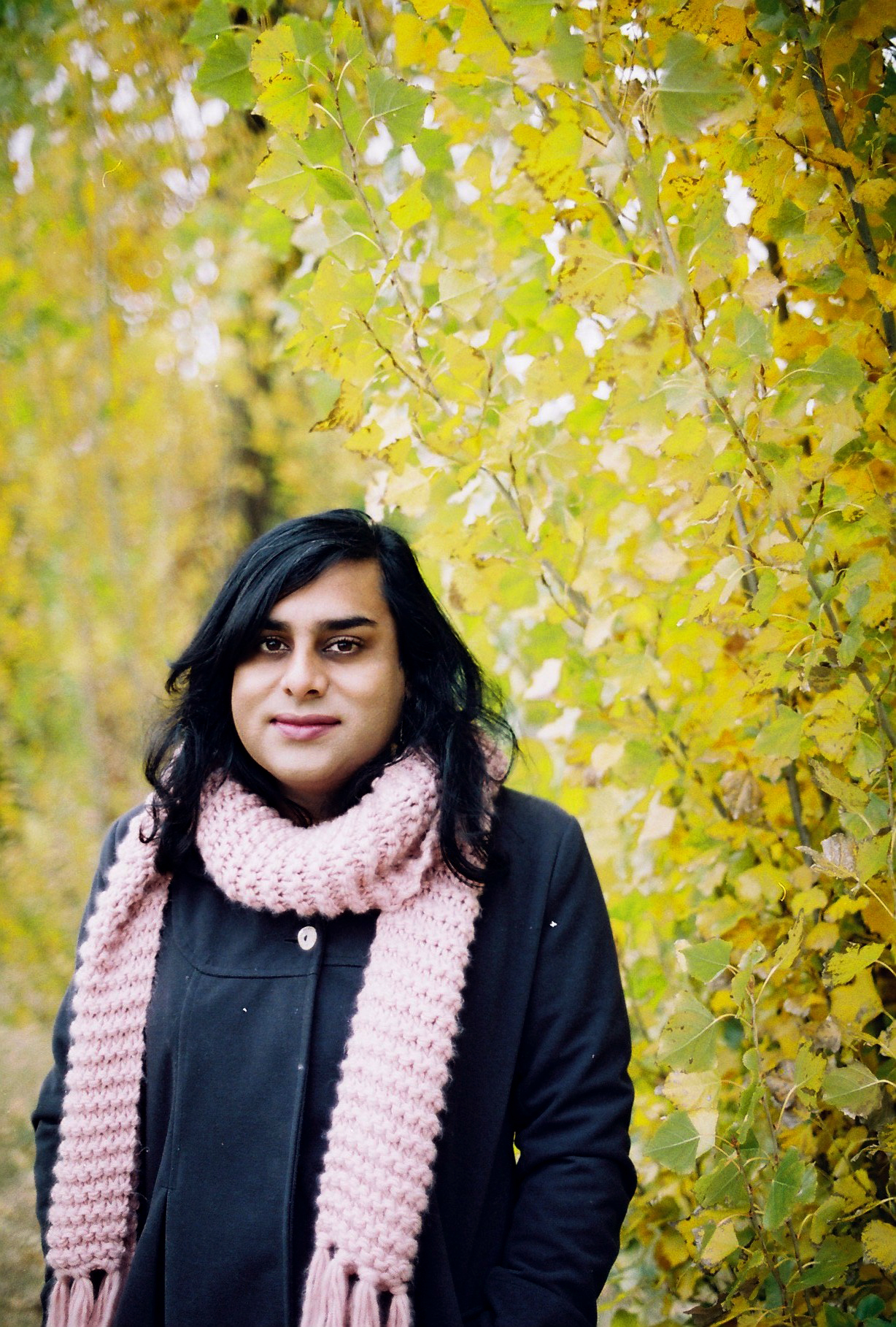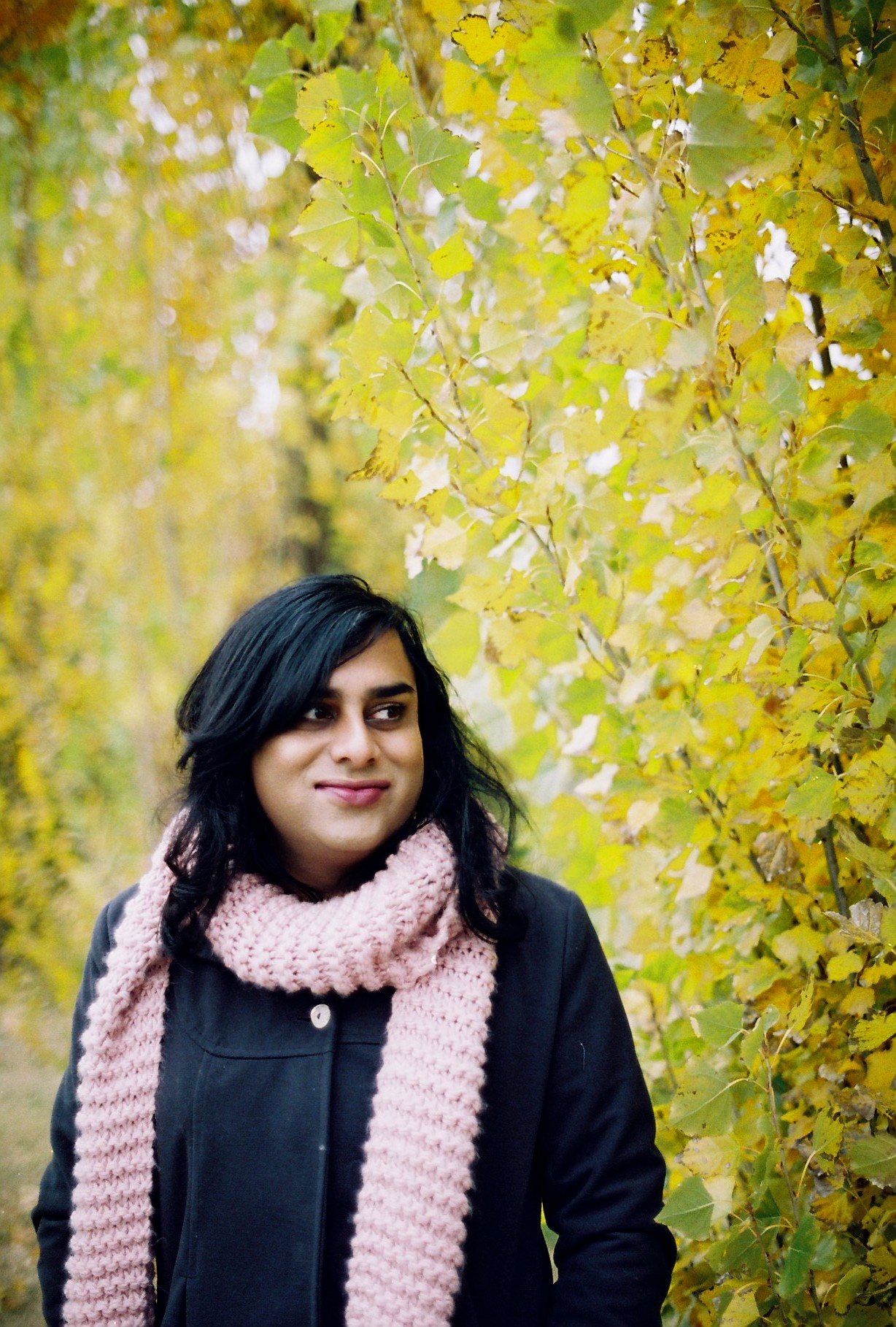Interview #61 — Shoeb Ahmad
by Cher Tan
Shoeb Ahmad is a trans-femme Muslim woman of Bangladeshi heritage who has been creating idiosyncratic sounds in the Australian music underground for over a decade.
Using guitar, electronics, voice and computer, Shoeb works across forms: as singer/composer, sound artist and improviser, both solo and in groups such as Agency, Spartak and Tangents. Her album “quiver” was released in May this year with the support of Sydney-based record label Art As Catharsis, while Tangents recently released their album New Bodies on the acclaimed label Temporary Residence.
Cher spoke to Shoeb about carving an arts practice from Do-It-Yourself beginnings, making sense of the self through art and music, and reclaiming cultural artefacts to create new meanings within diaspora.
We've been friends for... what, slightly more than a decade! Meeting as young adults involved in the punk subculture, then slowly evolving to discover our respective practices while still always being informed by the Do-It-Yourself ethos that we were formed in. Can you speak more to this evolution? How has this journey shaped you in the way you make music and produce art?
I thought about this today—[one of my bands] Spartak formed at the start of 2007 and we met each other in December that year so yes, more than a decade. It’s pretty amazing to still be connected with one another after all the various life changes we’ve been through.
Punk to me was like the gateway to becoming a creative person. I liked music and thought hey, maybe I can also write songs and perform them, but it wasn’t until I discovered bands like Joy Division, The Clash, Fugazi and The Slits that I realised that if I had the right attitude and aesthetic balance, I could do whatever I wanted to.
Working with a DIY mindset has helped me to continue creating without boundaries. It has also taught me to think about self-reliance, and to stay busy with various projects so I can keep evolving my practice. I’m lucky that all of it [my practice] is part of my working life now and that I don’t have to compromise my choices because I’m valued for them now. It’s pretty liberating!
—
"Punk to me was like the gateway to becoming a creative person."
—
You released your first solo album Roomsound in 2006. Twelve years later, your latest (fourteenth!) release “quiver” will be launched on your national tour starting late-June. In what ways do you see your practice changing with the times, whether sonically or mentally?
In some ways, my practice hasn’t changed that much at all. I’m still creating work from a simple idea in the only way that makes sense to me, which could be seen as the prescribed 'wrong way'. By that, I really mean seeing the creative process as an intuitive one—no trying to make gear work according to manuals, no strict songwriting form, no 'right' way of playing my instruments, etc. However, I feel that my processes have become tighter: once where I might have improvised a whole record upon initial thought, I’ll now develop the ideas in my mind before committing to a recording session. Maybe this has to do with becoming older and wanting to get the most out of the time I spend on a project.
—
"The 'I' within the work allows the listener/viewer to put themselves into the narrative and I hope that people do because I think you can adapt these thoughts and feelings onto any personal journey, which sees the intersecting of both vulnerability and strength pretty intensely."
—
Can you tell me more about your recent installation work broken-binary-brown? What kind of responses or feedback did you get post-exhibition?
Working in the installation form has been a relatively new experience for me so undertaking this was a big challenge. It was also quite important in terms of exploring questions around my identity. The notion of creating a piece that sat between sound art and a contemporary classical piece inspired by music by [bands like] Sonic Youth, Swans and Godspeed You! Black Emperor was an interesting process, using tonality and tension to enhance the minimal use of language to drive the narrative and emotional depth to it. It was great to use this opportunity to work with visual images and develop that part of my creative practice and see how it fits in with the sonic elements of my work.
And like a lot of the music that I make, I placed a strong emphasis on slow movements between the sounds and images, which was heavy on repetition and interlocking loops. This led to someone describing my practice as time-based and perhaps separate to any kind of fixed art form, which was a nice way to look at the exploratory potential. Having the faith of the commissioning gallery and very positive responses from both gallery patrons and the media has me really enthused about developing more pieces in the installation and durational art forms.
What questions around your identity did you explore for this installation?
It was pretty similar to 'quiver' in some aspects but because I specifically honed in on gender identity with this work and used broader language in the text narrative, the exploration on this subject became a more universal question and appreciation of the ‘identity” journey to understanding oneself. The 'I' within the work allows the listener/viewer to put themselves into the narrative and I hope that people do because I think you can adapt these thoughts and feelings onto any personal journey, which sees the intersecting of both vulnerability and strength pretty intensely.
It’s common knowledge that the Australian art and music world can be both very white and/or straight, especially as more and more conversations are being started and had. How do you navigate the axes of your identity—whether as a trans woman, a person of colour, or both—while working within this world and yet not pander to it?
Mate, you don’t know the half of it! Part of me feels like coming out as a trans person has been the easiest part of my whole artistic career, mainly because I’d been at it for so long; there’s a certain respect, not to mention a broader sense of queer acceptance in recent times. BUT being a person of colour in the arts is still much more of a strange feeling, and to be honest, I feel that my career to date has been slightly 'white-washed' because of who I collaborate or associate with artistically.
Maybe the flipside of this is that it’s not my fault that people regard who I work with as more important than what I bring to the table? That said, I think I have always been on my own path with this arts business—I’m pretty much on the periphery of things, which perhaps has more to do with being from Canberra and working from here still. This 'outside-looking-in' mentality comes from my love of cross-pollination and genrefuck—it keeps things interesting and keeps me motivated to continue making distinct work that isn’t dictated by trends.
—
"There’s a sense of reclaiming my culture and identity while thinking about the sonic experiments that I keep dearest to my heart, which in this case is all about beats, bass and noise!"
—
Going from this, I know from recent conversations with you that you’ve started a new electronic project, Alicia Sparkles. It’s heavy on dub/dancehall, noise and music sampling, including clips from your mum’s old Bengali pop cassettes. Can you speak more to this? Do you think combining these styles with art from your cultural roots makes for a different sense of your overarching practice?
There’s a sense of reclaiming my culture and identity while thinking about the sonic experiments that I keep dearest to my heart, which in this case is all about beats, bass and noise! I love how dub and dancehall seem to sound quite intense but they’re also great for a dance so it’s really about the push and pull of that. Moreover, I love displacing elements of subcontinental pop music (ala Bollywood) to give the music a second meaning—not so much to re-appropriate, but to change the narrative and provide a different edge to what’s being said. Electronic music has always been an undercurrent in my music to date, so part of me playing with the Alicia Sparkles name was to be a bit more upfront about being a glam techno diva and to put emphasis on the rhythms we move to rather than the melodies that make our heart swoon.
Do you have any advice for emerging sound artists and musicians?
The only thing I can reiterate is that one should never be concerned about what others are doing. As creatives, our work should provoke and raise discussion so if someone doesn’t understand what you do, it really shouldn’t be an issue because they are probably not the person you are making the work for. The key is to be making the work for you and if public validation comes through, then that is nice but it’s not the end game.
Who are you inspired by?
First touch points will always be music I’ve heard—both past and present. I take a lot of inspiration from writing and visual art too. Again, I say this folds into the influence of an aesthetic over the direct influence of an artistic vision. People like Tracey Thorn really stand out for me—a great vocalist and songwriter but also a thinker who can lay out great thoughts with the right language.
What are you currently listening to?
New records by Terra Pines (great Brisbane “sludgepop” trio) and Yo La Tengo (New Jersey avant-indie-pop legends). I also just saw Norwegian guitarist Kim Myhr perform solo this week and finally bought his last album You | Me on LP, which is a true bliss-out experience.
What are you currently reading?
In particular, I’ve been reading back on old print issues of much-loved Australian music rag Mess+Noise, which was probably my last proper engagement with longform music journalism (something I’ve thought about since you wrote the profile of me for the latest Swampland!) Apart from that, I’ve been moving house and looking at all the books I have so I know I’m ripe to re-read some good things now. One book I’m looking forward to is an anthology of new African writing called Africa39, which was published the year Nigerian city Port Harcourt was named UNESCO’s World Book Capital.
—
"Pretty sick of the lowest common denominator thinking that is we’re all either ‘slinty-eyed’, ‘terrorists’ or ‘curry munchers’ without delving deeper into the history of our journeys and trying to understand what we bring to the wider society rather than seeing us not assimilate as much as we should."
—
How do you practice self-care?
Lots of warmth from my wife and kids helps me stay on top of the rest of my life. I’m lucky to be a respected person wherever I am, which cannot be said for a lot of people in a similar position to myself. I try to stay as headstrong as I always have been and give short shrift to those who think they have the right to say anything about me without getting to know me first.
What does being Asian-Australian mean to you?
I honestly wish more people understood the true richness of Asian culture and sought knowledge of the melting pot of commonalities and distinctions that make it what it is. Pretty sick of the lowest common denominator thinking that is we’re all either ‘slinty-eyed’, ‘terrorists’ or ‘curry munchers’ without delving deeper into the history of our journeys and trying to understand what we bring to the wider society rather than seeing us not assimilate as much as we should.
Join Shoeb at her Melbourne launch for Quiver
Find out more
shoebahmad.bandcamp.com
Interview by Cher Tan
Photography by Leah Jing McIntosh







